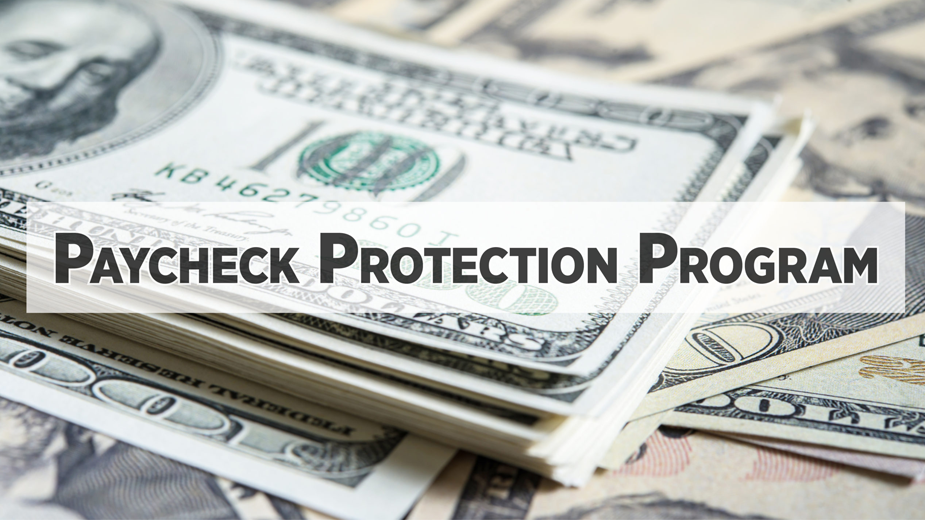‘It Takes Time’: Unofficial Deadline for PPP Round 2 Nears
YOUNGSTOWN, Ohio – The official deadline for the second round of Paycheck Protection Program funding is still a week away, but bankers and accountants are urging those who are eligible to get their applications in as soon as possible if they haven’t done so already.
Officially, the second round ends March 31. On that date, the Small Business Administration will stop processing applications and no more money will be awarded.
“If your application isn’t in a week beforehand, there’s a chance you could miss the deadline,” says Frank Hierro, Premier Bank’s Mahoning Valley regional president. “The 31st isn’t really the cutoff. It’s ahead of that because it takes time to process and validate the amount of the loans on our end and then the SBA has to do that.”
Premier will stop taking Round Two applications Wednesday, adds commercial banking manager Josh Toot.
“Some banks have already turned that off, but our deadline to get everything into our system is [March 24], that way we have the time to get it all into our system,” he says. “The last thing we want to do is not get someone’s request in.”
Legislation to extend the deadline for Round Two to May 31 passed the House of Representatives March 22, but must still be taken up by the Senate. That bill would also give the SBA an additional 30 days to process applications that are turned in, eliminating the guesswork around when applications will need to be filed by.
“We are anticipating that it is going to be pushed back. That being said, we’re still talking with our clients to get things pushed through and expedite everything so that if it’s not extended, we get everything through,” Toot says.
As of March 21, the SBA reported 3.1 million loans totaling $195.8 billion have been approved in the newest round of the Paycheck Protection Program.
Industry wide, banks are reporting lending less during the newest round, a trend attributed to the SBA’s restrictions on second-draw loans – chief among them, businesses must show a 25% drop in revenue between comparable quarters in 2019 and 2020.
“Talking to SBA loan service providers and other banks, it’s around 35% to 40% of the volume in Round One,” says Stan Feret, chief lending officer for Cortland Bank. “Inevitably, there were loans granted in Round One that weren’t made out of necessity but because of their uncertainty, they qualified.”
The expansion of PPP loans to more types of business – often smaller enterprise and sole proprietorships – has also reduced the overall dollar volume of the current round.
“There’s a lot more smaller dollar requests because of the changes to sole proprietor schedule C being allowed to use gross receipts and the changes to schedule S for farmers,” Toot says. “Unit-wise, we’re still seeing plenty of applications coming through, but dollar-wise it’s definitely less.”
With the second round of PPP wrapping up, there’s also attention on getting forgiveness for loans made in the first round. So far, the SBA reports, 2.1 million of the 5.2 million first-round loans have been forgiven, with 234,000 being processed as of March 21. The agency has yet to receive forgiveness applications for 2.8 million Round One loans.
Much of the delay stems from the release of the 3508S form, a streamlined application form for borrowers of less than $150,000. That form wasn’t released until March 5. Of the Round One loans, 60% fit into that category, Feret says.
“Most banks elected to not process requests until then. So now there’s a sense of urgency to start processing the majority of forgiveness requests,” he says.
For accountants, the release of that form has caused some further delays.Taxes for C corporations are still due April 15 – the federal deadline for individual returns was pushed to May 17 – while partnerships and S corporations were due March 15. The release of the 3508S forgiveness form came in the thick of preparing those returns.
“Since banks waited, most of us as accountants said, ‘We won’t touch anything in March because it’s tax season,’” says HD Davis CPAs managing partner Tim Petrey. “We postponed the remainder of our forgiveness applications until after April 15. I’m pretty certain that for our clients with loans greater than $150,000, the majority have already applied for forgiveness. I’d say many of them have been forgiven.”
Among the applications that have been turned in, the bankers say the SBA has been within its 90-day period to review and approve forgiveness applications. The caveat, however, is that the agency’s rapid expansion to handle the Paycheck Protection Program appears to have caused inconsistencies in the process.
“I had a group of clients in the same industry with all of their applications turned in with the same supporting documents. By the time it got to the SBA, I got different questions back about each of them,” Petrey says. “That tells me the SBA has not really figured out a great process yet for training because they’re not consistent in how they review or the documentation they require. It’s sporadic at best. That means some applications process very fast. Some have been done in a week and some we submitted in December are still up in the air.”
But, he says, the mantra of the forgiveness process is the same as it’s been since it began last fall: be patient.
“Do it correctly, submit the right stuff. You’ve got 10 months from the end of your tracking period to apply for forgiveness. For most people, that puts them well into the summer before they absolutely have to turn in their application,” he says. “As long as it’s forgiven in the end, who cares how fast that happens? That’s been our voice through this whole process.”
Copyright 2024 The Business Journal, Youngstown, Ohio.



